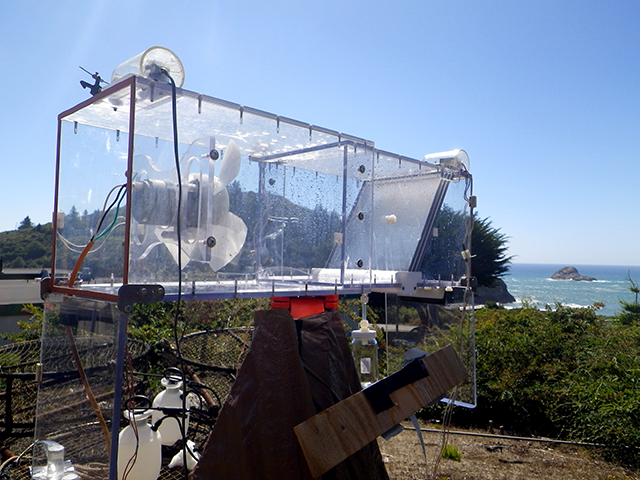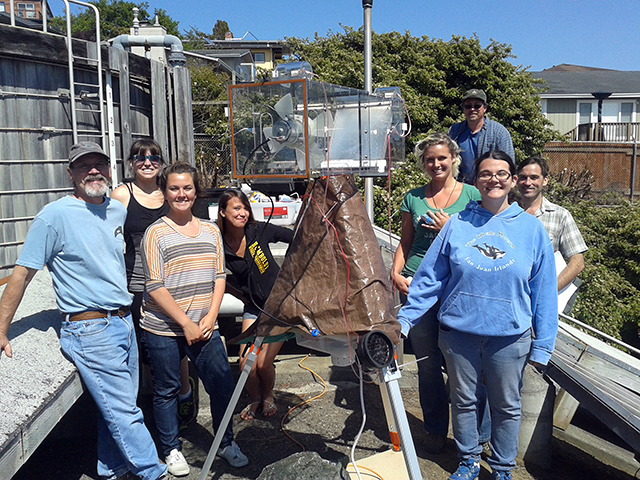
Now, as part of the FogNet project, researchers from Humboldt State are joining those at other universities and organizations along the coast to look at fog’s potential as an indicator of environmental health. Faculty and students from Humboldt State’s Marine Laboratory are among contributors to the project, which is funded by the National Science Foundation.
“What we’ve confirmed is what previous studies have shown—that there is mercury in the fog,” says Dave Hoskins, a technician at HSU’s Marine Lab. “Past research indicates levels are increasing, and these samples will show if that is continuing.”
According to Hoskins, the levels of mercury and other contaminants can have a negative impact on not only the sea, but also inland. Other parts of the project are measuring mercury content in a variety of habitats.
Mercury is a heavy metal neurotoxin that accumulates in aquatic food webs. It often reaches high levels in fish and other animals, making them unsafe for human consumption.
Results won’t be forthcoming for a while as the project continues into 2016. Humboldt State’s collection efforts wrapped up this week, and the samples will be passed along to chemistry professor Matt Hurst and his students for analysis.
The devices used, called “fog catchers,” snare the air and condense it into runoff. Fog passes through three layers of Teflon strings stretching across a metal frame inside a Plexiglas box. Behind the structure is a fan that sucks the air into the collection device. Droplets form on the strings, and are funneled into a jar.

Labor is provided by students recruited by Hoskins. They share responsibility for daily collection of the jars, then reset the mechanism for the next morning’s harvest.
“Students are learning how to collect data, how to record it, and how to use it for research,” Hoskins says.
The entire process has been impaired by drought conditions that altered ocean currents throughout the summer. In 2014, the daily measurements produced as much as 200 milliliters of runoff in a single day, but the 2015 samples were as small as 3 milliliters.
“We thought last year was low, but we only had six days this summer that produced more than six milliliters,” Hoskins said. “Last year we collected 18 samples. So far this summer we have collected eight samples since the collector was set up May 30.”
FogNet is led by atmospheric chemist Peter Weiss-Penzias of the University of California, Santa Cruz. Also involved in the project are researchers from Moss Landing Marine Laboratories, CSU Monterey Bay, Bodega Bay Marine Labs, San Francisco State University, Pepperwood Preserve in Sonoma County, and the U.S. Geological Survey.